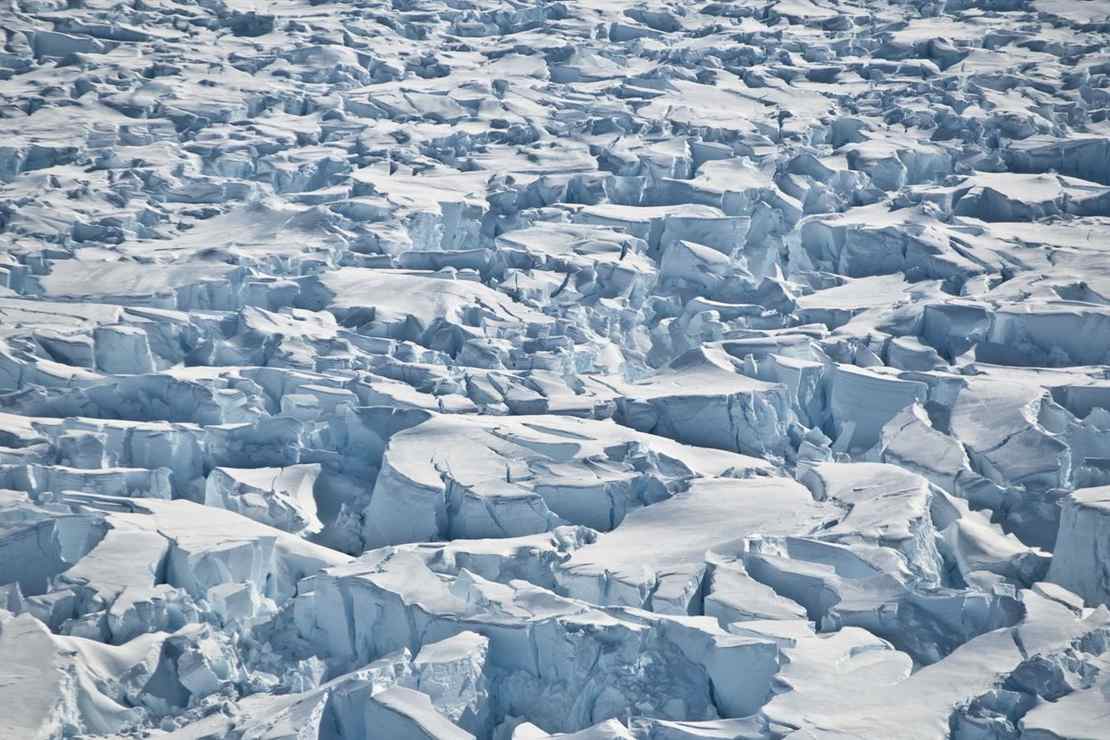Some scientists are warning of a “Doomsday Glacier” that could break in a few years and destroy us. The glacier is real enough. It’s the Thwaites Glacier in Antarctica, and experts are saying that warming seawater underneath the glacier is melting it from below. This makes the glacier vulnerable to sliding off and raising sea levels around the world.
Thwaites sits in West Antarctica, flowing across a 120km stretch of frozen coastline. A third of the glacier, along its eastern side, flows more slowly than the rest—it’s braced by a floating ice shelf, a floating extension of the glacier that is held in place by an underwater mountain. The ice shelf acts like a brace that prevents faster flow of the upstream ice. But the brace of ice slowing Thwaites won’t last for long, said Erin Petitt, an associate professor at Oregon State University.
Beneath the surface, warmer ocean water circulating beneath the floating eastern side is attacking this glacier from all angles, her team has found. This water is melting the ice directly from beneath, and as it does so, the glacier loses its grip on the underwater mountain. Massive fractures have formed and are growing as well, accelerating its demise, said Pettit. This floating extension of the Thwaites Glacier will likely survive only a few more years.
If that “floating extension” slides into the ocean, it will raise sea levels from five to 15 feet — eventually. But when?
“If Thwaites were to collapse, it would drag most of West Antarctica’s ice with it,” said Scambos. “So it’s critical to get a clearer picture of how the glacier will behave over the next 100 years.” ITCG research, including future sea-level projections, will be vital for policymakers in their efforts to mitigate and adapt to the impacts of global sea level rise, the team said.
A rise in sea level of 5 feet is manageable. A rise of 15 feet would probably lead to a “Waterworld” scenario, but for that to happen, the earth would have to get a lot warmer very quickly.
Indeed, like most doomsday scenarios involving catastrophic global warming, the assumption is that human beings would stand in place and do nothing while the water lapped at their ankles, then thighs, then waist, then chest, neck, and head until we bestirred ourselves to save us.
There is a lot we can do to save ourselves. Mankind has more than a thousand years of experience dealing with rising waters. And it’s not even ruinously expensive.
The International Thwaites Glacier Collaboration (ITGC) researchers are not expecting “doomsday” any time soon if they want a “clearer picture” of how the glacier will behave “over the next 100 years.” So why refer to Thwaites as a “doomsday glacier”?
When it comes to global warming, the best way to gain funding and notoriety is to scare the living hell out of citizens to justify the government spending a lot of cash on their pet projects. Besides, “Doomsday Glacier” is kind of catchy, isn’t it?
It may even be the name of the next blockbuster Hollywood “end of the world” spectacular.

If it does break off it will not raise sea level 15 feet.
Just the same as a glass full of ice doesnt overflow the glass when it melts.
The ice already displaces as much water as it would when it melts.
This whole story is nonsense, glaciers have been melting for millions of years, this is nothing new.